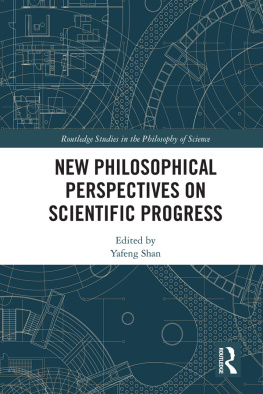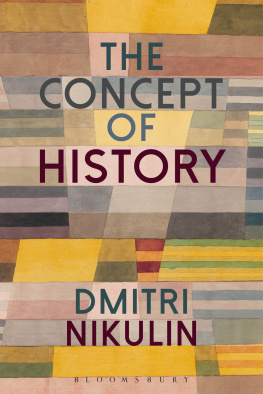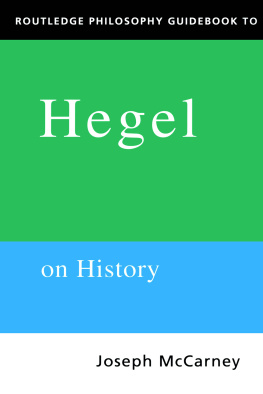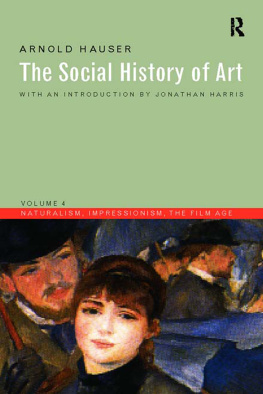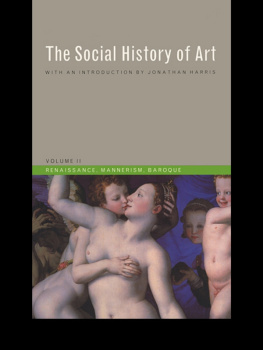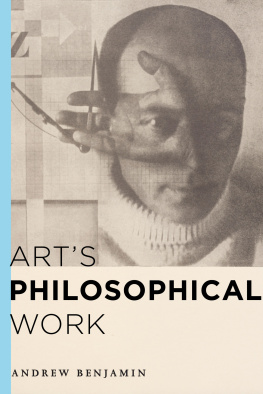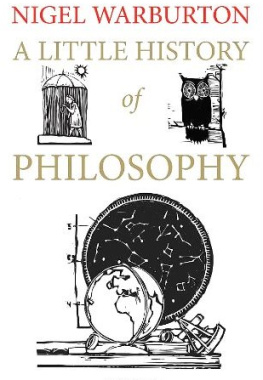Contents
Page List

Routledge Revivals
The Philosophy of Art History
First published in 1959, this book is concerned with the methodology of art history, and so with questions about historical thinking; it enquires what scientific history of art can accomplish, what are its means and limitations? It contains philosophical reflections on history and begins with chapters on the scope and limitations of a sociology of art, and the concept of ideology in the history of art. The chapter on the concept of art history without names occupies the central position in the book thoroughly discussing the basic philosophical outlook for the whole work. There are also further chapters on psychoanalysis, folk art and popular art. The chapter on the role of convention in the history of art points the way for further study.
The Philosophy of Art History
Arnold Hauser

First published in 1959
by Routledge & Kegan Paul
This edition first published in 2016 by Routledge
2 Park Square, Milton Park, Abingdon, Oxon, OX14 4RN
and by Routledge
711 Third Avenue, New York, NY 10017
Routledge is an imprint of the Taylor & Francis Group, an informa business
1958 Arnold Hauser
All rights reserved. No part of this book may be reprinted or reproduced or utilised in any form or by any electronic, mechanical, or other means, now known or hereafter invented, including photocopying and recording, or in any information storage or retrieval system, without permission in writing from the publishers.
Publishers Note
The publisher has gone to great lengths to ensure the quality of this reprint but points out that some imperfections in the original copies may be apparent.
Disclaimer
The publisher has made every effort to trace copyright holders and welcomes correspondence from those they have been unable to contact.
A Library of Congress record exists under LC control number: 58010966
ISBN 13: 978-1-138-68826-1 (hbk)
ISBN 13: 978-1-315-54190-7 (ebk)
Arnold Hauser
THE PHILOSOPHY
OF
ART HISTORY

First published in England 1959
by Routledge & Kegan Paul Ltd
Broadway House, 68-74 Carter Lane
London E.C.4
Printed in Great Britain
by Percy Lund, Humphries & Co. Ltd
London and Bradford
Arnold Hauser 1958
No part of this book may be reproduced in any form without permission from the publisher, except for the quotation of brief passages in criticism.
Preface
T HIS BOOK is concerned with the methodology of art history, and so with questions about historical thinking; it enquires what scientific history of art can accomplish, what are its means and its limitations. It contains philosophical reflections on history, but not a philosophy of history in the sense of a theoretical scheme of world history, nor a logic of the historical process, nor yet historical prophecy; there will be no attempt to deduce the process of history from some higher idea, nor yet to press everything past and future into a unitary scheme. In this respect it remains faithful to the principles that guided me in The Social History of Art (1951). However, the point of view and form of exposition will be quite different. In the former book I adopted the descriptive method and aimed at complete subordination of my theoretical presuppositions and the regularities I believed I had discovered to the task of describing and interpreting the historical phenomena. It was left to the reader to take note of and to criticise the categories in terms of which the interpretation proceeded. I deliberately avoided providing an introduction in which I might have informed him directly about my intentions and method. In a sense, the present work is intended to take the place of that unwritten Introduction. In it the philosophical presuppositions of my conception of art history are set forth explicitly, historical material being employed only to illustrate fundamental conceptions of a systematic character. This time it is left to the reader to test these conceptions in the light of his own experiences with art and his own view of history. Where he feels a lack of agreement, author or reader may have been at fault, the author if he has lost sight of the concrete historical realities which are his subject, the reader if he has failed to make the effort of abstraction necessary for any systematic enquiry.
My view of the character of the historical process within which art is enmeshed remains unchanged, notably my conviction that the sociological method is as indispensable in the history of art as in the history of the other spiritual creations of mankind. I am still very conscious of the limitations of the sociological method. The leading principle, both of my previous work and of this, may most simply be formulated as follows: everything in history is the achievement of individuals; individuals always find themselves in a certain definite situation in time and place; their behavior is the product both of their inborn capacities and of the situation. That is in truth the kernel of the doctrine of the dialectical character of historical events. The opponents of the method I adopted accused me of being overmuch entangled in the preconceptions of the dialectical theory of history. Readers of the present book will not fail to note the reservations that I have to enter against the classical formulations of this theory; and they will find that the most serious defect I now see in my former book consists in a failure to apply the dialectical method cautiously enough. I had not sufficiently realized when I wrote it that the meaning and function of a stylistic trend are by no means unalterable, that the flexibility of its connection with the various social groups can scarcely be over-emphasized. It is of the essence of all historical development that the first step decides the second, these together the third, and so on. No single step by itself enables one to draw conclusions as to the direction of all subsequent steps; without knowledge of all the previous steps, no single step can be explained, and even with such knowledge it cannot be predicted.
The problems of the present book have occupied me without intermission since the appearance of my Social History of Art; they all revolve round the few points that I have just indicated. That common origin of the problems examined gives the present work its unity. Different sections arose out of various occasions, but I would not let myself be deflected from the end I had in view. The intimate connection between problems that recur in several different chapters, though in different perspectives, has made some repetition of my fundamental theses unavoidable. This defect might have been remedied by pruning, but it seemed preferable to leave some few repetitions rather than risk impairing the completeness and natural flow of thought.
The first two chapters reproduce with little alteration the text of lectures. This fact explains both the briefness of the bibliographical notes, which were added subsequently, and also a certain pithy, programmatic character of the text. They take up problems that are more precisely formulated in later chapters. The chapter on the concept of art history without names both is the most elaborate and occupies a central position in the book; in it the philosophical outlook basic for the whole work is most thoroughly discussed. The chapter on psychoanalysis is the contribution of an enthusiastic, professionally uncommitted outsider. The chapter on folk art and popular art is the outcome of long, enthralling study and of that unremitting anxiety about the future in which my generation has grown up. The chapter on the role of convention in the history of art is perhaps the most personal one in the book, and the one in which most evidently the thought both promises and requires further development.


